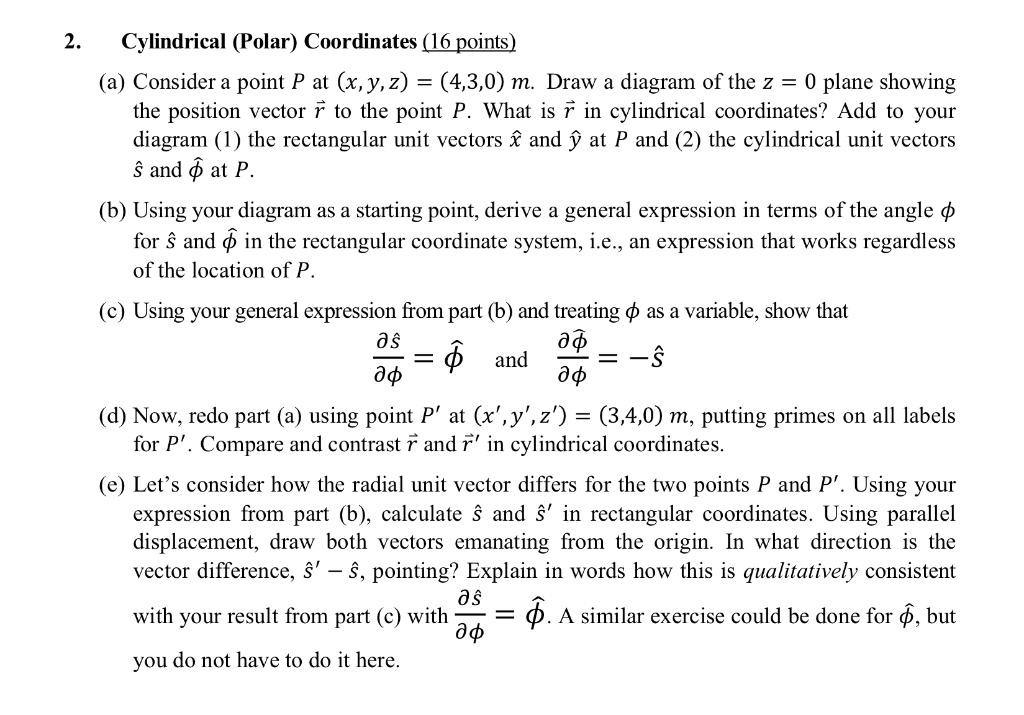Home /
Expert Answers /
Advanced Physics /
cylindrical-polar-coordinates-16-points-a-consider-a-point-p-at-x-y-z-4-3-0-m-draw-a-dia-pa962
(Solved): Cylindrical (Polar) Coordinates (16 points) (a) Consider a point P at (x,y,z)=(4,3,0)m. Draw a dia ...
Cylindrical (Polar) Coordinates (16 points) (a) Consider a point at . Draw a diagram of the plane showing the position vector to the point . What is in cylindrical coordinates? Add to your diagram (1) the rectangular unit vectors and at and (2) the cylindrical unit vectors and at . (b) Using your diagram as a starting point, derive a general expression in terms of the angle for and in the rectangular coordinate system, i.e., an expression that works regardless of the location of . (c) Using your general expression from part (b) and treating as a variable, show that (d) Now, redo part (a) using point at , putting primes on all labels for . Compare and contrast and in cylindrical coordinates. (e) Let's consider how the radial unit vector differs for the two points and . Using your expression from part (b), calculate and in rectangular coordinates. Using parallel displacement, draw both vectors emanating from the origin. In what direction is the vector difference, , pointing? Explain in words how this is qualitatively consistent with your result from part (c) with . A similar exercise could be done for , but you do not have to do it here.
Expert Answer
(a) The diagram of Z=0 plane showing the position vector r? to point P below,In cylindrical coordinates,r?=5cos??x^+5sin??y^(1) If I include unit vect
